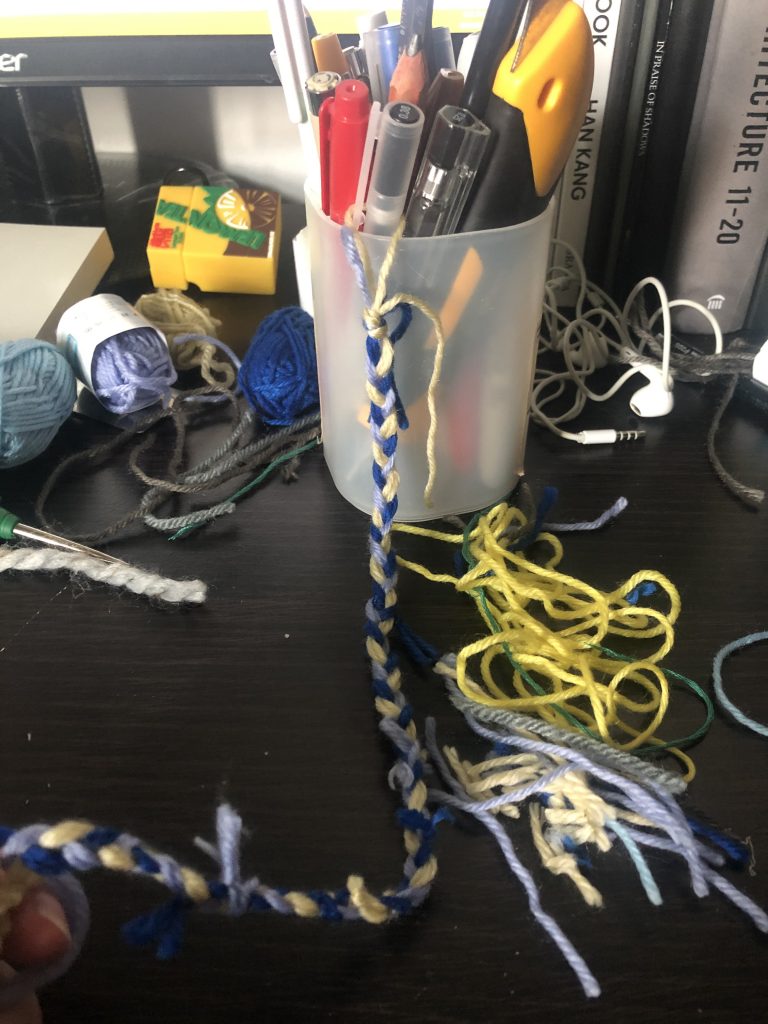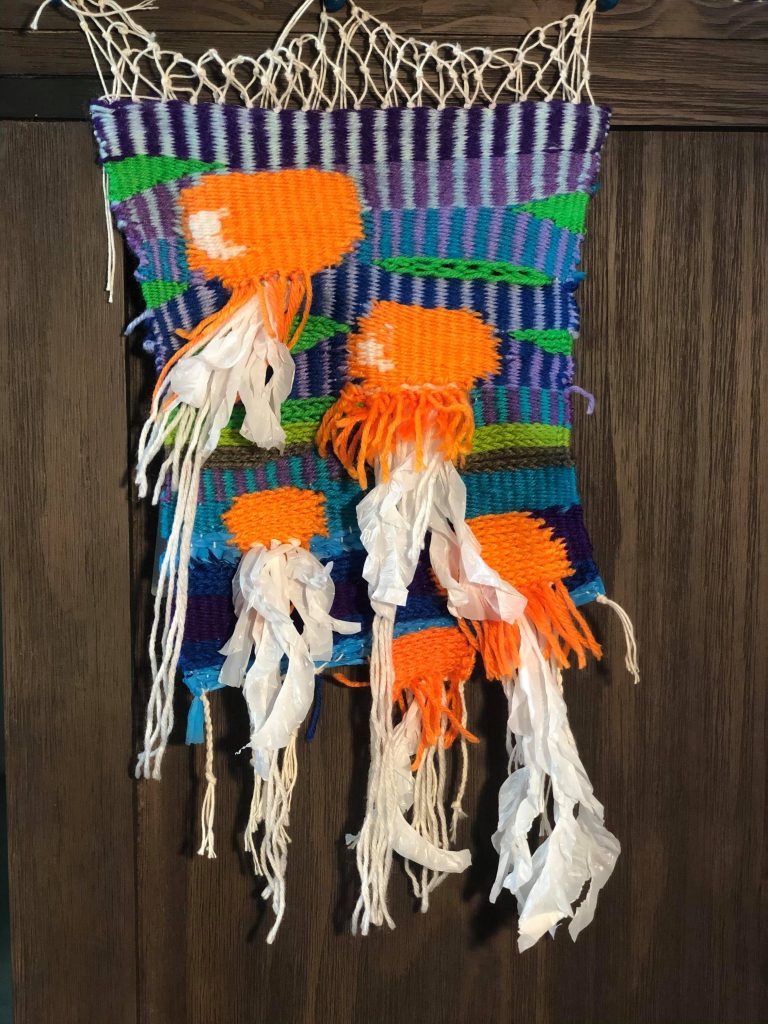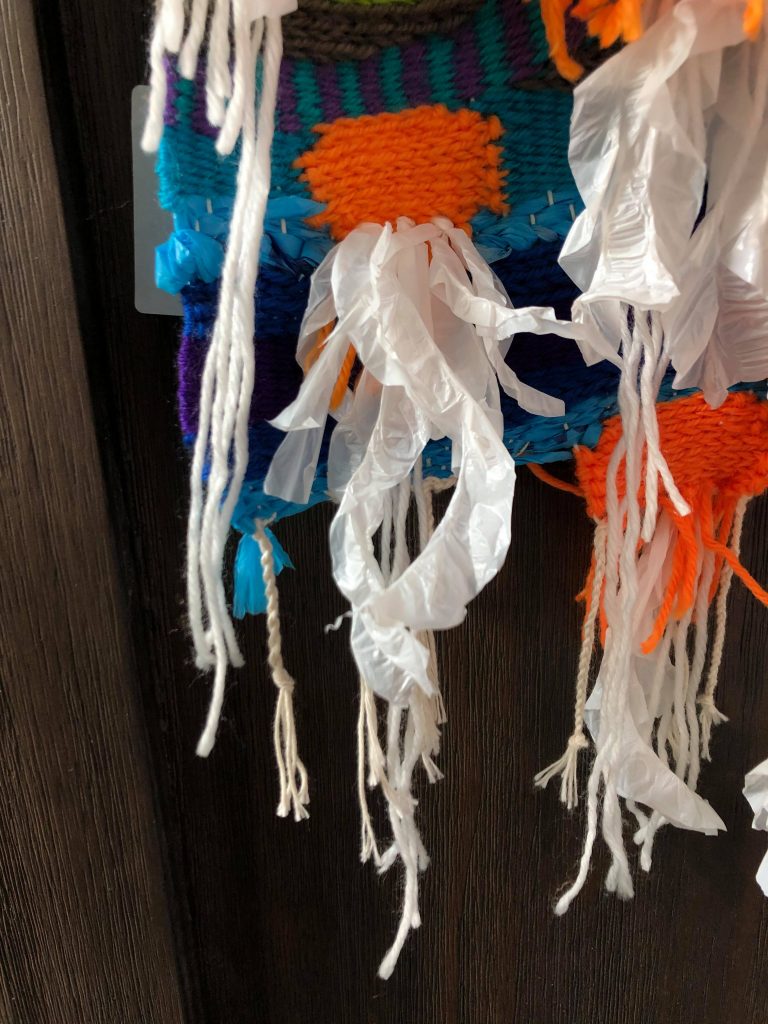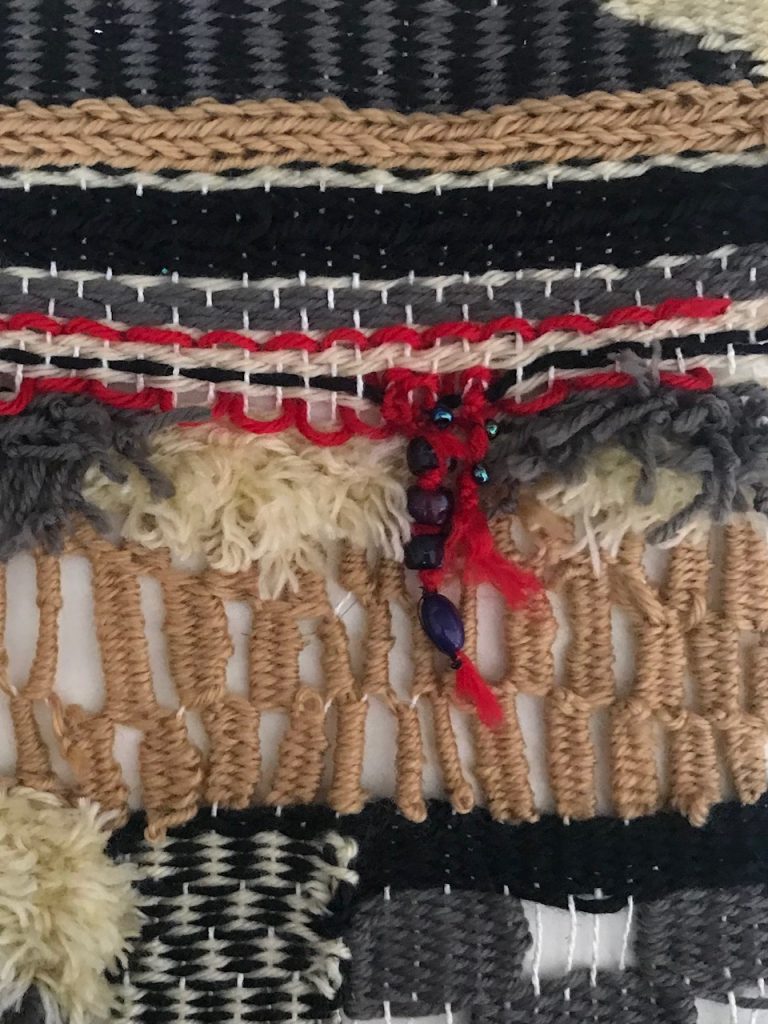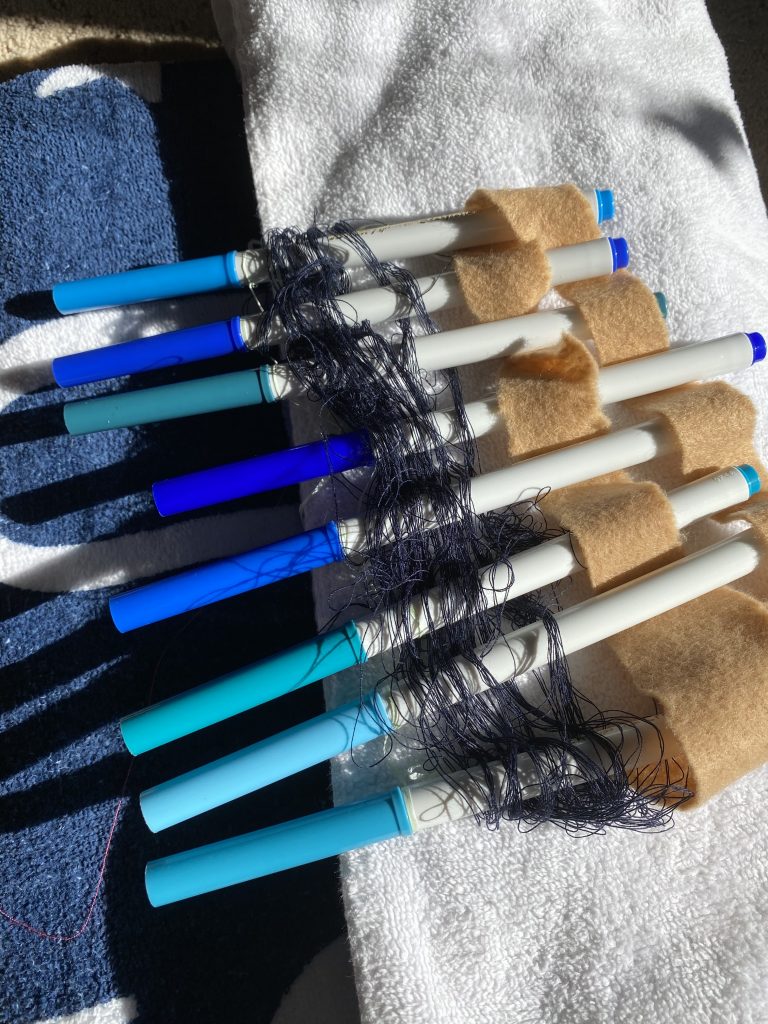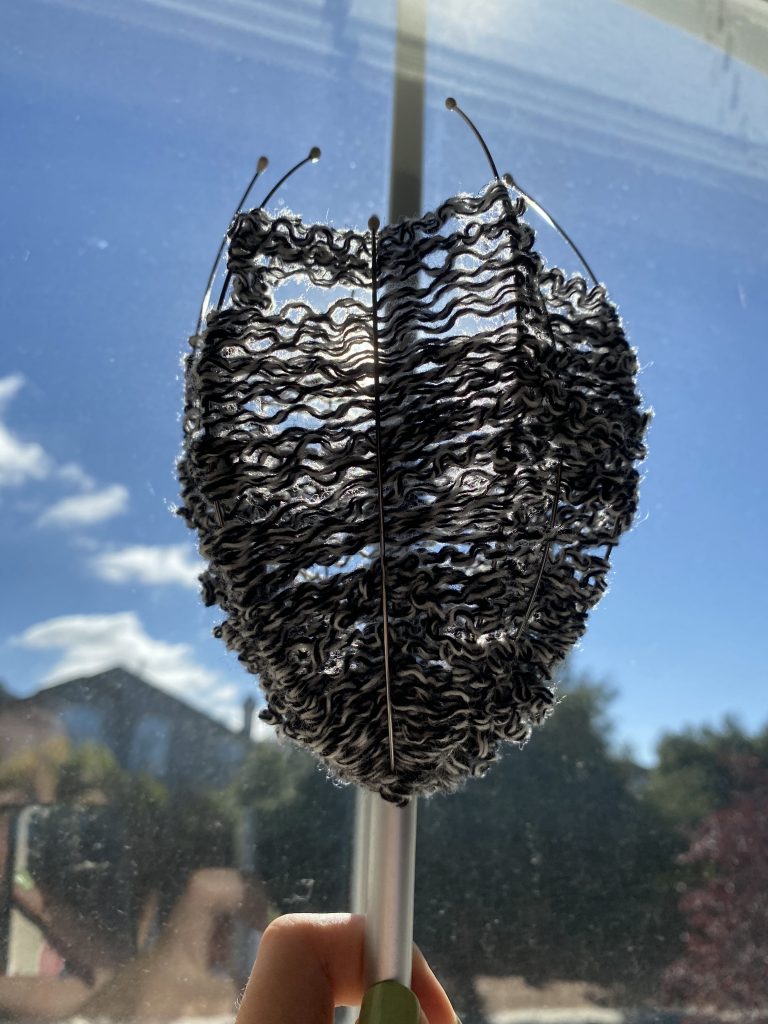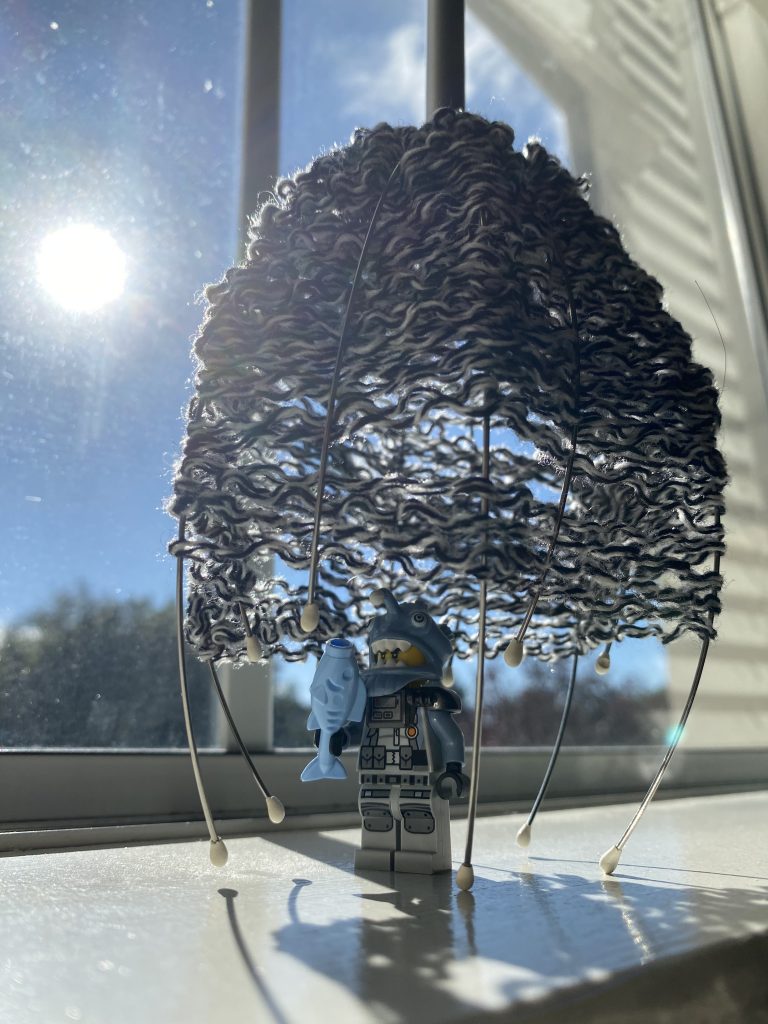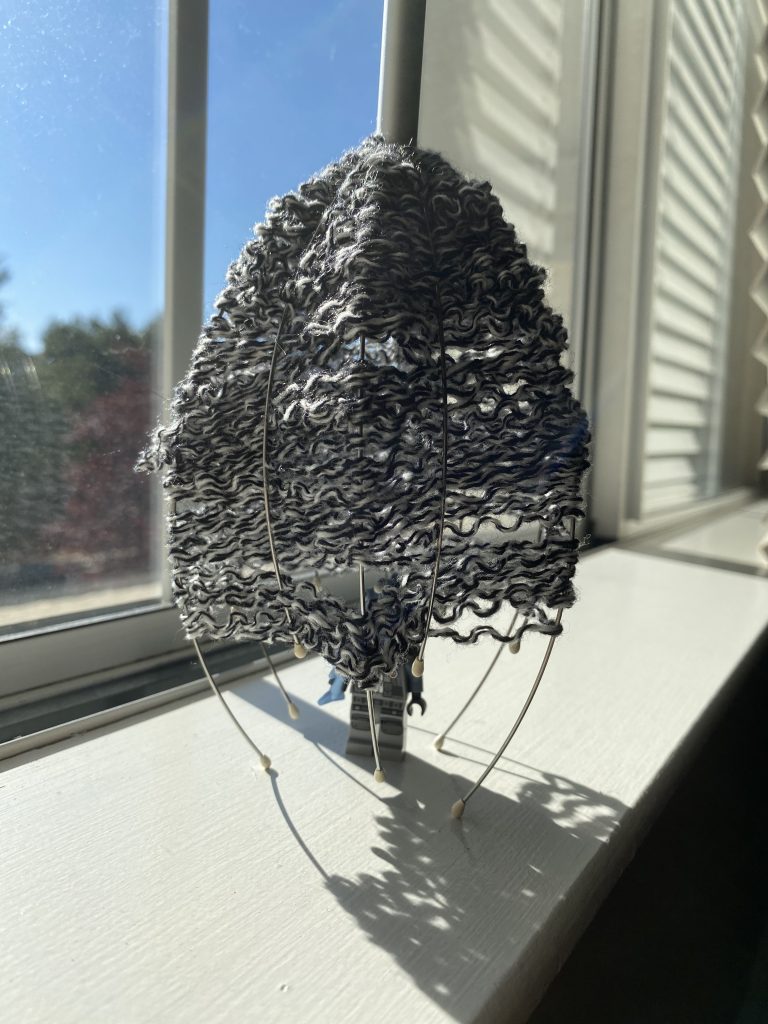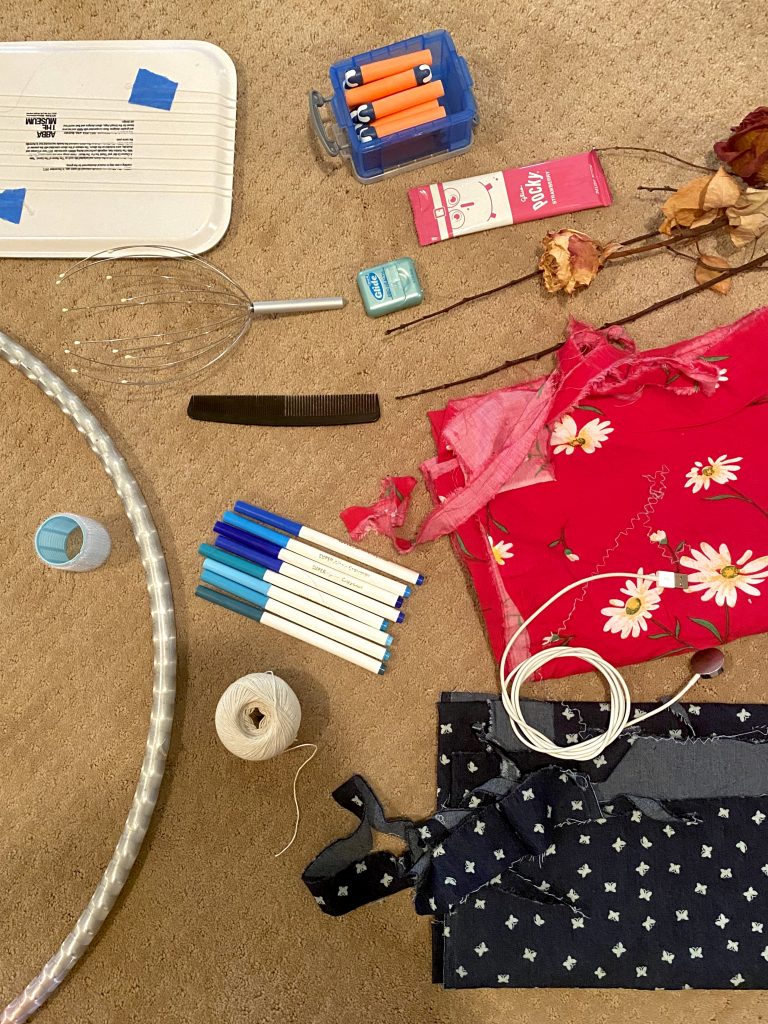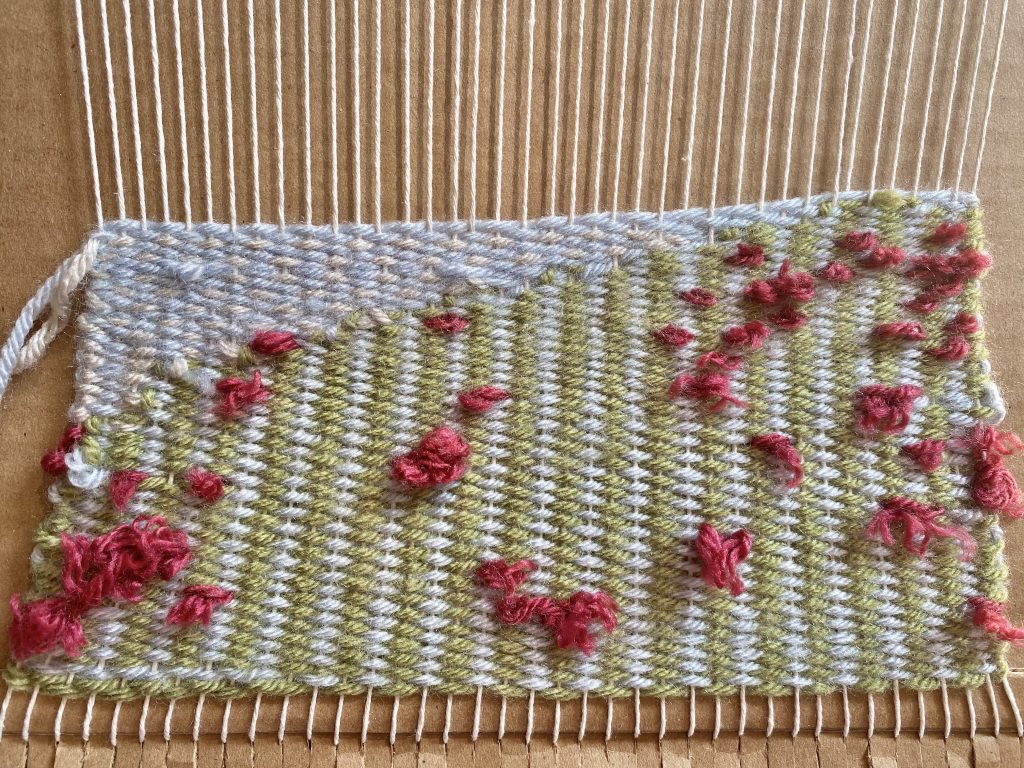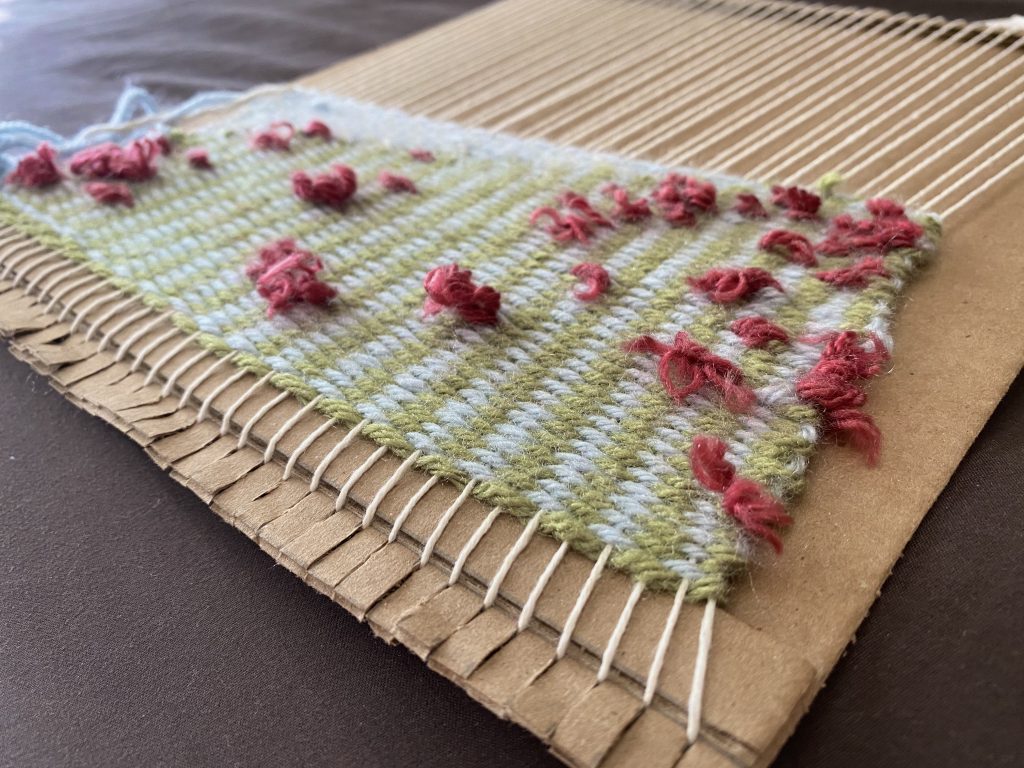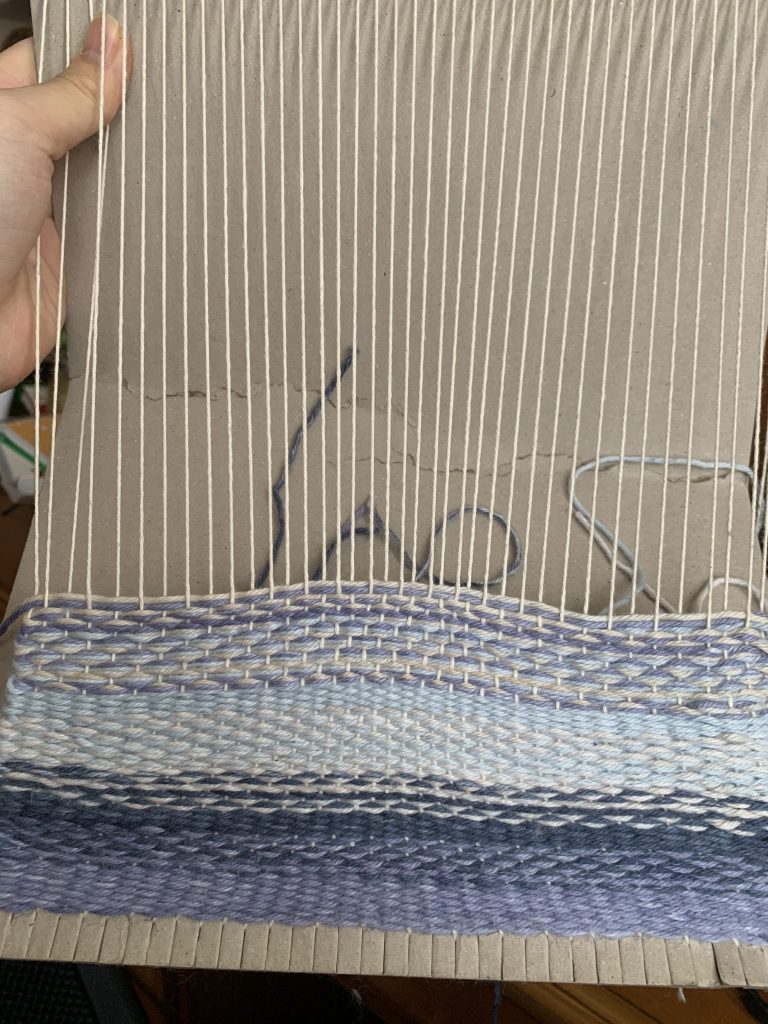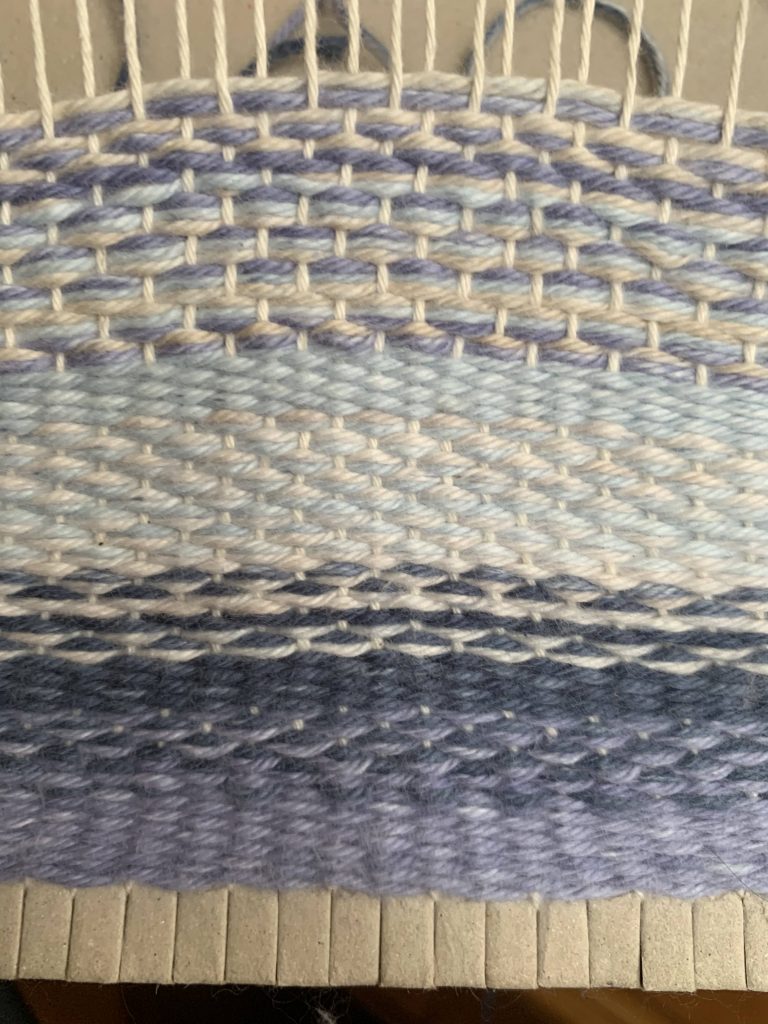By: Remi Adeoti
When creating this weaving I didn’t have a plan in mind nor an intended shape that I wanted to display through the weaving, I was lost on what to create. Rather than focusing on a specific shape I decided to use this project as an exploratory one that allowed me to practice different techniques.

Some of the techniques I utilized were dovetails (single regular/irregular, group regular/irregular), interlocking, rya nots, bubbling, horizontal rows, vertical rows, wrapping, twining, diagonal slits, and soumak. Using all of these techniques I was able to explore and figure out which methods I liked and others I didnt.

I found Rya knots and wrapping tedious and somewhat annoying, only because they required alot of attention and required a good amount of effort for small outcomes. However I did enjoy dovetails and vertical rows although both were still tedious I liked the neatness of the rows and the feeling of fighting for control when looking at the dovetails.







